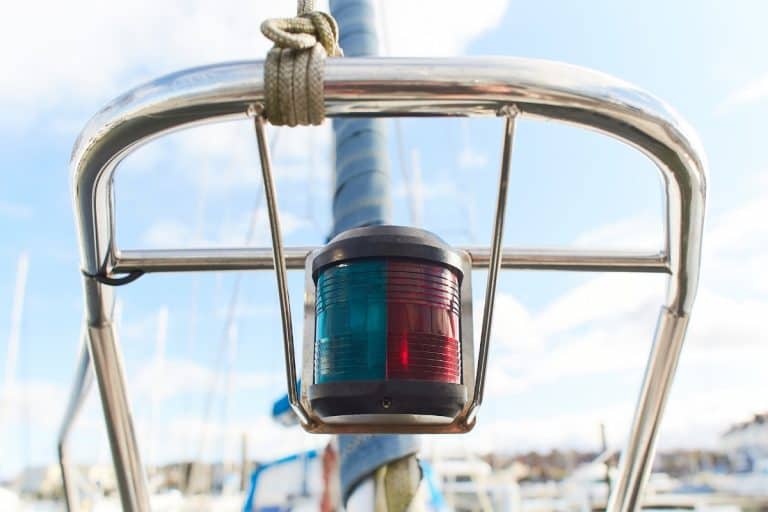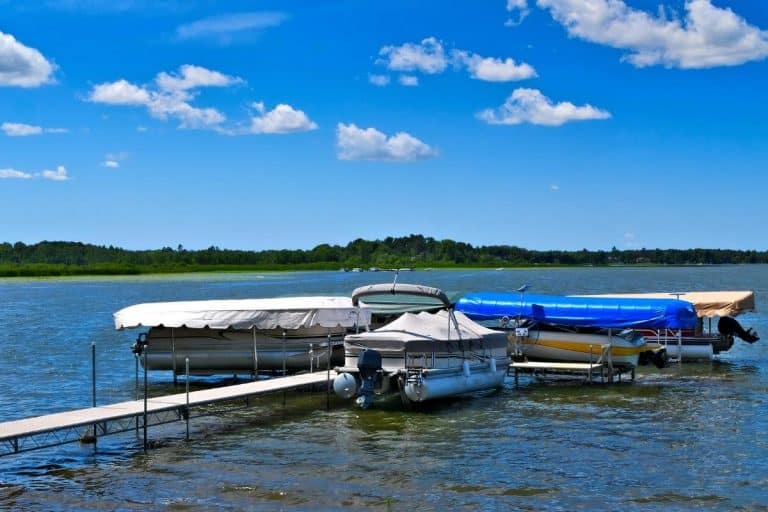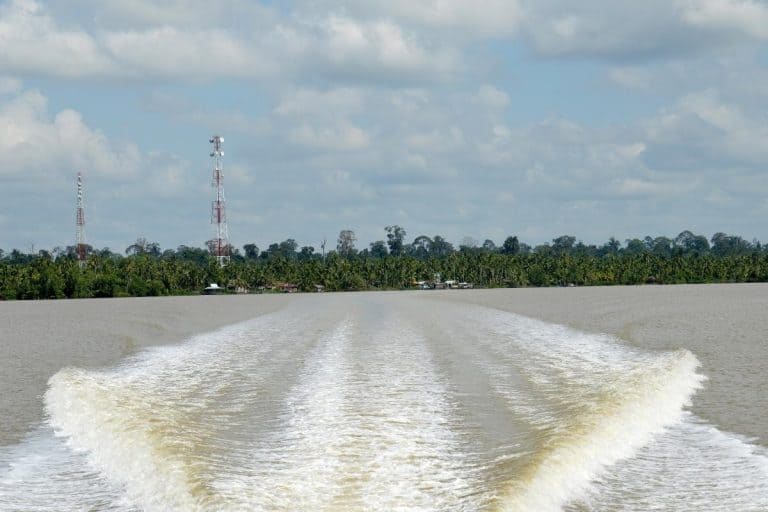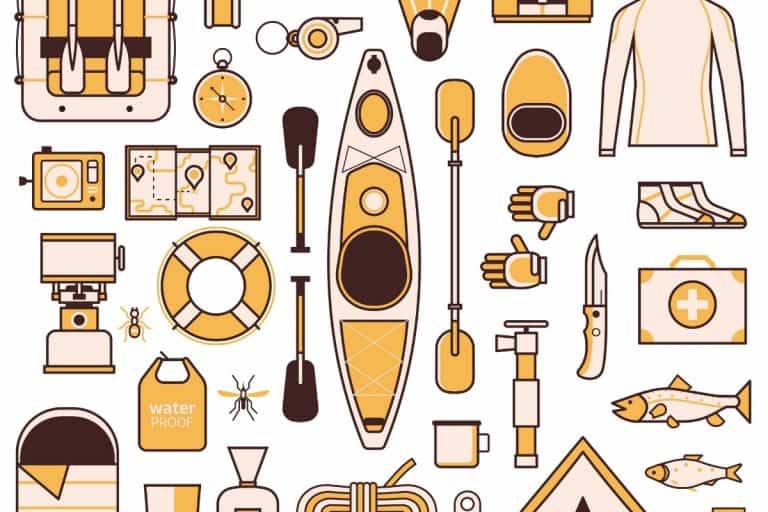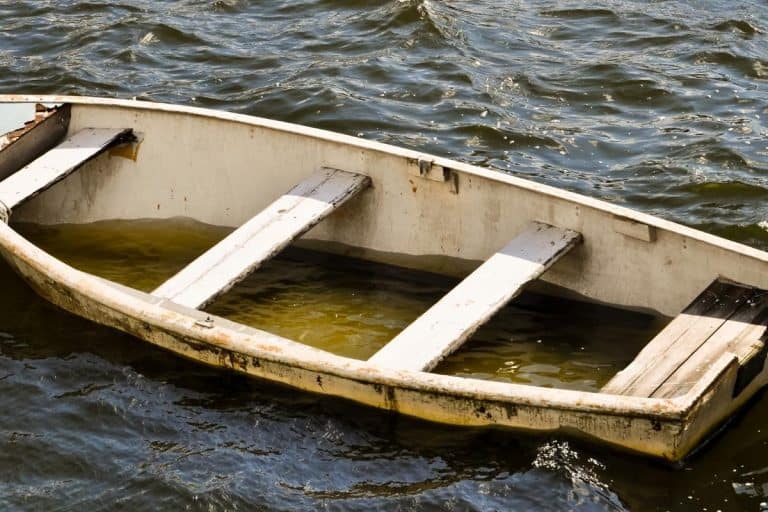Boat vs. Personal Watercraft: Here’s The Difference

If you’re in the market for your first water-faring vessel, then you may wonder about the differences between a boat and a personal watercraft. In this explanatory guide, I’ll tell you everything you need to know.
What are the differences between a boat and a personal watercraft? Boats and personal watercraft are different in areas such as vessel shape and size, speed, storage, carrying capacity, maintenance, and price.
If you want to learn even more about what separates personal watercraft and boats, this guide will explain more fully. By the time you’re done reading, you’ll know which vessel you should buy!
What Is a Boat?
Technically, a boat is a watercraft, but it’s not a personal watercraft. (If that doesn’t yet make sense, it will soon).
Boats come in a variety of sizes, shapes, and styles, but what separates them from ships is their size. Ships are larger and thus have a greater carrying capacity than boats.
A boat can be used in all sorts of different bodies of water, from placid bodies like lakes and streams to bays and oceans.
Boats are also available powered or unpowered. A powered boat requires those on board to use a pole, paddle, or oar to manually propel the boat forward as well as do other maneuvers.
A powered boat usually has an engine, be that an outboard or inboard engine, that allows the boat to reach variable speeds on the water. Batteries, a steam engine, and an internal combustion engine are other sources of power.
An engine needn’t always be the source of power. A boat with sails is also considered a powered vessel. The boat would rely on the wind to navigate.
The Types of Boats
There are many, many types of boats out there. Perhaps in the future, I’ll explore the full list, but for now, I just want you to have a clear idea of what constitutes a boat.
Thus, these are the most popular types of boats.
- Banana boat: No, not like the sunscreen company. A banana boat is an inflatable boat shaped, appropriately enough, like a banana. Often used for cargo, a banana boat can carry passengers as well, usually up to 10.
- Jon boat: Jon boats are flat or almost flat bottom boats commonly made of polyethylene (plastic), aluminum, fiberglass, or even wood sometimes. They’re often rectangular in shape with a blunt nose. Jon boats are relatively cheaper than other boats and easier to transport due to their being lightweight.
- Ski boat: Ski boats are inboard boats with a unique propeller and engine configuration that allow the boat to achieve fast speeds.
- Pontoon boat: The classic pontoon is a large, rectangular, flat, slow-traveling boat. Supported by dual pontoon tubes, a pontoon can be as large as 30 feet and carry large numbers of passengers. Pontoons are beloved for their stability.
- Jet boat: If you have the need for speed, a jet boat will satisfy. These highly maneuverable boats feature a propulsion system that sends water behind the boat as you race.
- Lifeboat: You don’t use a lifeboat for recreational boating, but rather, these types of boats exist to save lives. A lifeboat will carry life jackets, medical supplies, and possibly food and water as well.
- Motor yacht: An upscale type of boat, a motor yacht includes up to two engines, typically diesel engines. These boats turn heads and make people yearn for the good life on the sea.
- Cabin cruiser: An enclosed type of boat, cabin cruisers are very luxurious as well. The boat has a galley and runs on a generator so it can offer air conditioning. Designed for saltwater bodies, a cabin cruiser utilizes rudder steering, a wide berth, and a deep V-shaped bottom.
- Game boat: A game boat is for game fishing. With a fiberglass shell and gas or diesel engine, a game boat features a cooking galley, plumbing system, and sleeping quarters so you can take an extended fishing trip.
- Runabout boat: A runabout boat is a casual type of boat for water skiing, fishing, and boat racing. The capacity of one of these boats is tremendous, as a runabout can fit upwards of eight people.
- Trawler boat: Another style of fishing boat, a trawler features a displacement hull and a slow speed. The fuel efficiency is great so you can travel longer without going through your fuel supply.
- Cuddy cabin: A cuddy cabin has an aluminum or fiberglass skeleton, fishing features, plenty of storage, and an enclosed deck. You can also use a cuddy cabin for watersports.
- Catamaran: The sailing catamaran has two long hulls equidistant to one another. Each hull lacks volume but has a shallow draft and a high rate of displacement. You can cruise on one of these boats for a fun day trip. Catamarans come in handy for fishing too.
- Center console boat: A center console boat is the one for you if your boating adventures sometimes take you off the beaten path. Designed for offshore waterways, even the rougher ones, a center console also makes an excellent fishing vessel.
- Dinghy boat: A dinghy refers to a sailboat, rowboat, or inflatable boat. These are non-powered boats that require you to use sails or oars to steer. Some might have outboard engines, but this is considered uncommon.
- Houseboat: Houseboats are designed for full-time living on the water. While that’s not for everyone, houseboats have what you need, including plenty of amenities inside for sleeping, cooking, bathing, and living.
- Deck boat: A deck boat is a boat measuring 25 to 35 feet long. The boat is characterized by its wider beam, V hull, and power drive. Deck boats have even more room for passengers than you would expect!
- Bowrider: Considered a good family boat, a bowrider offers a swimming platform for diving, plenty of space, and room for at least eight people. The V-shaped hull allows a bowrider to traverse all sorts of waters.
What Is a Personal Watercraft?
Next, let’s switch gears and discuss what a personal watercraft is.
A personal watercraft is sometimes called a jet ski, a water scooter, or simply a PWC.
You can select from two personal watercraft styles, the first being a stand-up PWC and the second a sit-down PWC.
A stand-up personal watercraft requires the rider to–as you might have guessed–stand while riding.
A sit-down personal watercraft, which is sometimes referred to as a runabout, allows the rider to sit while riding.
Jet skis and other types of personal watercraft feature an inboard engine. The engine activates a pump jet with an impeller that allows the rider to steer and receive enough thrust to move forward on the water.
Boat vs. Personal Watercraft
Now that you have a much clearer picture in your mind about what a boat and personal watercraft are respectively, let’s go over the differences between boats and personal watercrafts.
Shape
Boats come in a multitude of shapes, as the section on the various types of boats should have proven.
Some are large and boxy such as pontoon boats. Many more feature refined V-shaped hulls.
There’s a reason for this recurring feature. A V-shaped hull enables a boat to slice swiftly and easily through the water, which also increases the boat’s speed potential (more on this to come).
That’s why you so commonly see personal watercraft with V-shaped hulls as well.
Size
PWCs, like boats, are on the market in a variety of sizes.
- Sit-down personal watercraft can measure anywhere from 40 to 50 inches wide and 120 to 130 inches long.
- A stand-up personal watercraft has an average width of 25 to 30 inches and a standard length of 80 to 100 inches.
Some boats are sized about the same as a personal watercraft.
Much more often though, a boat will outsize a PWC by a significant margin, especially if we’re comparing a jet ski to a pontoon boat, a houseboat, or a yacht.
Storage Capacity
Whether you’re taking a day trip with your entire family or even plan on staying a night or two on your vessel, storage capacity is important.
You can’t exactly camp out on a personal watercraft. The vessel simply doesn’t have the size or the amenities for that.
Thus, the storage capacity is about commensurate with what you’d expect of a PWC’s size. You might have front, under-seat, or rear storage, but we’re talking storage compartments. That’s all.
These compartments are designed to hold your phone, some drinks, a few snacks, and other essentials, but nothing extensive.
Boats, given that they’re usually larger than PWCs, do have a greater storage capacity.
At the very least, you’ll find dedicated storage areas and cubbies for more significant storage than that mentioned above.
For enclosed boats designed for multiday boating excursions, you’ll have more ample storage still for keeping clothes, shoes, and everyday essentials safe from the water.
Passenger Capacity
A personal watercraft, at the very least, is made for a single passenger. At most, these vessels can carry four people.
PWC models with such a high passenger capacity are uncommon, though. More than likely, most personal watercraft you see will be able to carry two people, maybe three tops.
The passenger capacity of a boat varies by a huge degree.
Some boats are more intimate and only allow for two or three people including the driver. Other boats can easily carry groups of between four and eight people.
The biggest boats may easily be able to transport a dozen people.
Maintenance
When it comes to maintaining your vessel, is that easier to do with a boat or a personal watercraft?
While I would say that depends on the size of the boat, a PWC is generally the easier to maintain of the two.
The internal mechanisms that drive a personal watercraft are less complex than that of a boat, which makes the PWC easier to understand and thus personally upkeep.
A personal watercraft such as a jet ski is also often smaller than a boat as well. With fewer parts in general, be those moving or unmoving parts, you won’t spend as much time or as much money on maintenance.
Offseason Storage Options
A personal watercraft is small enough that you can lift it from the water, cover it, and store it in your garage until winter ends and the warm, long days fill the calendar again.
Granted, not all PWCs are that lightweight. Some weigh hundreds of pounds and others over a thousand pounds. You can’t lug those around nearly as easily.
When it comes to storing a boat, if yours is smaller, then you can follow the PWC storage method and slap a cover on the boat and stash it in your garage away from direct sunlight.
Much more often though, you’ll have to pay to keep your boat in an enclosed, climate-controlled environment.
Price
The last significant difference between a boat and a personal watercraft is the price.
The average cost of a new jet ski is between $5,000 and $20,000, with most buyers paying somewhere in the ballpark of $12,500.
As for the cost of a new boat, it’s all over the map depending on the factors discussed above such as shape, size, and carrying capacity.
Here’s a list that goes over the types of boats and their accompanying prices when bought new:
- Yachts – $30,000 and up
- Cabin cruisers – $100,000 to $500,000
- Houseboats – $100,000 and up
- Trawlers – $90,000 and up
- Speedboats – $75,000 and up
- Cuddy cabins – $50,000 and up
- Fishing boats – $25,000 to $100,000
- Deck boats – $20,000 to $50,000
- Pontoon boats – $15,000 to $50,000
- Sailboats – $12,000 and up
- Bow riders – $15,000 to $50,000
- Catamarans – $10,000 and up
- Jon boats – $500 to $3,000
Unless you’re interested in buying a very simple boat for daytime use like a jon boat, then you’re going to pay significantly more money for a new boat than a new PWC.
Once you get into used boats versus used watercraft, the line can become blurrier.
Generally, older boats will sell for cheaper prices commensurate with the costs of a new jet ski.
If you want a newer used boat in better condition, you’d still end up paying more for a used boat than a used personal watercraft.
